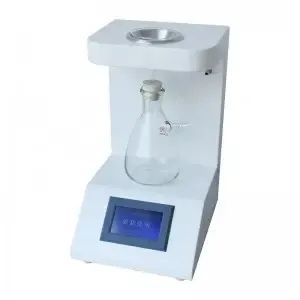 English
English


kinematic viscosity measurement
Kinematic Viscosity Measurement Understanding the Basics
Kinematic viscosity is a fundamental property of fluids that describes their internal resistance to flow. It is defined as the ratio of dynamic viscosity to fluid density and is typically expressed in centistokes (cSt) or square meters per second (m²/s). This parameter plays a vital role in various fields, including engineering, materials science, and fluid dynamics. Accurate measurement of kinematic viscosity is essential for a wide range of applications, from designing hydraulic systems to formulating paints and inks.
Importance of Kinematic Viscosity
The kinematic viscosity of a fluid affects how it behaves under different operating conditions. For instance, in the lubrication industry, understanding the viscosity of oils is crucial for ensuring optimal performance and durability of mechanical systems. In the food industry, the viscosity of sauces or dressings can influence product texture and consumer acceptance. Moreover, in environmental studies, measuring the viscosity of oil spills can help in predicting how these substances will behave in natural waters, influencing cleanup strategies.
Measurement Techniques
There are several techniques for measuring kinematic viscosity, with the most common being the use of viscometers. The choice of viscometer largely depends on the fluid’s viscosity range and the accuracy required. Some of the widely used types include
1. Capillary Viscometers These devices measure the time it takes for a fluid to flow through a narrow tube under the influence of gravity. The flow time is correlated to kinematic viscosity using standardized calibration methods. Capillary viscometers are particularly suitable for low-viscosity fluids.
2. Rotational Viscometers These measure the torque required to rotate a cylinder or spindle in the fluid at a constant speed. The data obtained can be used to determine both dynamic and kinematic viscosities. Rotational viscometers are versatile and can handle a wider range of viscosities compared to capillary viscometers.
3. Falling Ball Viscometers In this method, a ball is allowed to fall through the fluid under gravity. The time taken for the ball to fall a specified distance is recorded, and from this, the kinematic viscosity can be calculated. This technique is especially useful for high-viscosity fluids.
kinematic viscosity measurement

4. Vibrational Viscometers These instruments use vibrations to determine viscosity. By measuring the frequency or amplitude of the vibrations in the fluid, they can provide real-time viscosity measurements, which can be advantageous in continuous processes.
Factors Affecting Kinematic Viscosity Measurements
Several factors can influence the accuracy of kinematic viscosity measurements
- Temperature Viscosity is highly temperature-dependent. As temperature increases, the viscosity of most fluids decreases. Therefore, temperature control is essential during measurement.
- Contaminants The presence of particles or other fluids can alter the viscosity readings. It is crucial to ensure that the fluid being measured is homogeneous and uncontaminated.
- Calibration of Equipment Regular calibration of viscometers is necessary to maintain accuracy. This involves comparing the viscometer readings against standard fluids with known viscosities.
Conclusion
Measuring kinematic viscosity is essential in ensuring the proper functioning and safety of systems that rely on fluid flow. Whether in industrial applications or environmental monitoring, understanding and accurately measuring this property can lead to better outcomes. With advancements in technology, the tools available for viscosity measurement continue to improve, offering greater accuracy and ease of use. As industries evolve and new materials are developed, the importance of kinematic viscosity measurement will undoubtedly remain crucial in various scientific and engineering fields.
-
Differences between open cup flash point tester and closed cup flash point testerNewsOct.31,2024
-
The Reliable Load Tap ChangerNewsOct.23,2024
-
The Essential Guide to Hipot TestersNewsOct.23,2024
-
The Digital Insulation TesterNewsOct.23,2024
-
The Best Earth Loop Impedance Tester for SaleNewsOct.23,2024
-
Tan Delta Tester--The Essential Tool for Electrical Insulation TestingNewsOct.23,2024





